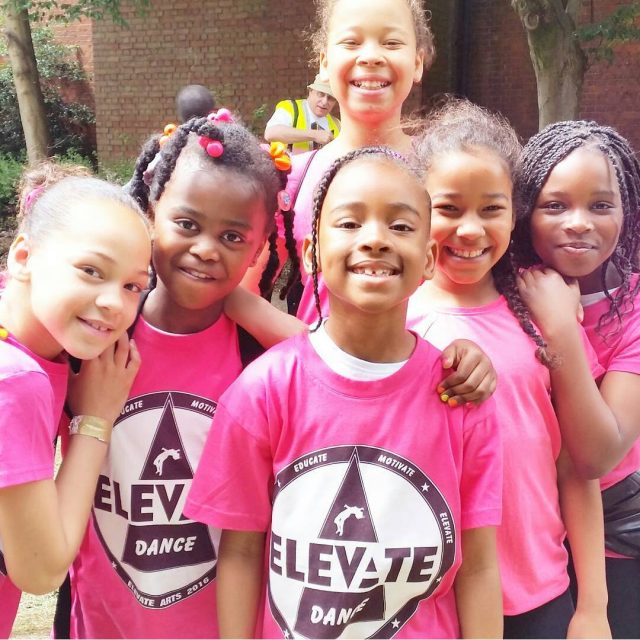So, you have decided to sign your child up for a dance class in 2021 that enables them to express themselves, build their confidence and gain them some street cred. While researching online, you discover loads of classes, all of which are labelled as Street Dance, Hip Hop or Commercial. You might even watch videos of these dance classes but for some reason you still struggle to spot the differences. Don’t stress! Surprisingly even those teaching these styles often do not understand the differences and will market their class incorrectly due to a lack of knowledge. Here is a guide so you as a parent can get to know the differences and make an informed decision about which style is best for your child and their goals!
Street Dance
Street dance is an umbrella term for a variety of street styles including, but not limited to; Breaking, Hip Hop, House, Vogue, Locking, Popping, Waacking and Krump. All street styles are social dances – meaning they are party dances/done with friends. Each street style is a standalone style and has its own origins, history and culture, groove and intention and technique/foundations (see some of our other blogs on specific street styles!)
A great Street Dance class should focus on and incorporate one or more of these street styles/techniques during the class. Some classes might focus on learning and building on the authentic styles and foundation moves while others may focus on teaching routines with the groove and authentic moves of street styles included in those routines. Some might do a combination of both – all are valid Street Dance classes.
At our Saturday Street Dance Academy at Elevate Arts we explore one authentic street style per term as we feel this unique method allows children to really learn each style in depth during their dance class and allows time for them to embody the technique and develop their creativity within the style. Taking ownership of their learning and really progressing within the style including their own freestyle/response to the music, as well as learning routines, helps them grow them into versatile street dancers.
If you are watching a class and it does not incorporate the foundations or the posture and groove of Street Dance, you are looking at a commercial class!

Hip Hop
Hip Hop can be discussed in terms of culture, music and dance.
Hip Hop culture dates back to the late 1960s/early 1970s in America and consists of MCing, DJing, Breaking and Graffiti. Some even argue that Fashion is an element of Hip Hop culture too and we agree – there is a fashion adopted by Hip Hop culture heads whether that be rappers or Street Dancers! (See our blog on “What is Hip Hop culture” to read more) Without Hip Hop culture there would be no Hip Hop music, Hip Hop dance or Street Dance.
Hip Hop music, or rapping, is pretty self explanatory! Hip Hop music originated at block parties in America in the late 1960’s/early 1970’s where there would be DJs on the decks and MCs talking over the music. DJ Kool Herc and Grandmaster Flash were key pioneers in this musical development and cultural movement. The music came first which gave birth to the dance. As the music evolved so did people’s movements as a response to the change in sound (Hence Street Dance starting with Breaking and evolving into Hip Hop. Even though Breaking is still its own Street Dance style, it gave birth to another style)
Hip Hop dance is a specific Street Dance style which evolved from Breaking. The music changed from break beats to having lyrics over the top, melodies, etc. The sound changed, the feeling changed, the movements changed. People got together, socialised and had fun, copying moves from each other and adding their own twist. This is where the happy, feel good, groovy vibes of New Jack /old skool Hip Hop dances originated. Since then, there have been a variety of Hip Hop/social moves added throughout the decades as music has evolved. We have gone from the Running man and Smurf to the reject and Mike Tyson/Kick It to the Woo and the Whip Nae Nae – all are certified Hip Hop moves! Hip Hop dance has a groove and intention which makes it feel and look different to the other street dance styles.
Hip Hop dance IS Street Dance (It is a style under the street dance umbrella) BUT Street Dance is NOT (Just) Hip Hop dance.
If you look at a Hip-Hop dance class, the movements should be strictly Hip Hop movements and not include popping, locking, etc (That would make it a street dance class) You can also get street style specific classes for other styles, for example, popping classes, breaking classes, etc which focus on each specific style.
Commercial
A commercial dance class is exactly what it says on the tin – commercial! This is the type of dance you see backing dancers do in music videos, TV shows and adverts, it is what is out there in the commercial world for everyone to see. This type of dance’s aim is to predominantly entertain audiences, to sell artists, products, etc. We all know that sex sells and this is why commercial dances are often sexual in nature (Take a look at any Beyonce or Rhianna video!) Commercial dance does not have a specific technique (i.e there is no dance technique called “commercial technique” and if there is they are robbing people!) This doesn’t mean you do not need technique to perform commercial dance well – often commercial dance incorporates elements of technical dance styles including street, contemporary, jazz, ballet, etc and those dancers you see on screen have had a variety of technical training as they understand versatility is key to becoming a successful commercial dancer within the industry. Commercial dance classes usually consist of learning a routine rather than technique or freestyle. New routines are also usually taught each class. Commercial classes are a great way to learn to pick up choreography fast and work on your performance skills, however to succeed as a commercial dancer it would be a good idea to also include some more technical dance classes including those in street styles.


